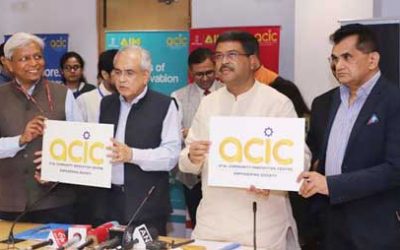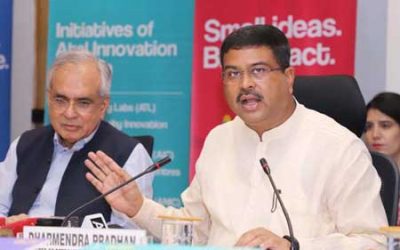Among the biggest beneficiaries of Covid-19-induced lockdowns have been the videoconferencing apps. With remote work becomes the new normal, enterprises and government organizations are swiftly resorting to video conferencing apps to connect with their employees, customers, and stakeholders. However, unplugged security gaps in a few apps have been a cause of concern.
Zoom, in particular, has experienced a tremendous surge in its user base, from 10 million daily users in December 2019 to more than 200 million daily users in March 2020. Consequently, the company’s fortunes have skyrocketed in the past few months.
As Zoom’s user base swelled, a number of security-related concerns too surfaced. The media coined a now infamous term “Zoombombing,” which refers to the unauthorized intrusion of a person into a Zoom call hosted by another person.
In the first week of April, these security concerns negatively impacted Zoom, after which the company sprang into action to take corrective measures and plug the security gaps.
The latest of these measures was announced on 5 May in a Zoom blog post. “One really great Zoom security feature that was released this past weekend gives you more control over the use of personal meeting IDs (PMIs) in your organization. With this latest release, Zoom account owners and admins can now disable the use of a PMI for scheduling or starting an instant meeting,” the post noted.
It added, “Because PMIs are always accessible using the same ID or meeting link, anyone can join unless they’re properly secured. Disabling the use of PMIs reduces that risk altogether and doesn’t leave PMI security up to individual users. This option to disable PMIs can be locked in the account or group level.”
Rising fortunes
Except for a brief period in early April, the Zoom stock on Nasdaq has seen a relentless climb during a four-month run. The stock hit its historical high of USD169.09 on 23 April 2020 from USD66.15, on 23 December 2019, witnessing nearly three time jump during this period. Zoom’s recent measures to plug the security gaps are likely to pay off even more, going forward.
In India, as in many other countries, Zoom has seen a phenomenal rise in terms of usage. As surveyed by telecom business magazine Voice&Data, “… an overwhelming 54% of corporate respondents in India indicated that they were using Zoom as a tool to enable collaboration between remote workers, as well as for communicating and networking with clients since 25 March 2020, when the nationwide lockdown became effective in India.” The survey further noted, “While 40% of respondents said they use WhatsApp, over 31% indicated using Microsoft Teams for collaboration and communication. Skype and Webex are the other two most popular tools ranking #4 and #5 respectively, with 29% and 26% of those surveyed saying they are using these for business continuity.”
Some inhibitors
Educational institutions, mainly schools and coaching institutes, have been among the key contributors to the surge in Zoom’s user base. However, they are unlikely to be contributing to its top line, as the teachers mostly seem to be using the free version. Since meetings set up using the free version could hold up to 100 participants and last for 40 minutes, they are good enough for organizing online classes divided into periods of 40 minutes each.
The recent concerns around security have been a put-off for some, if not all. Better World is aware of at least one school in Bengaluru that decided to stop using zoom. It opted for Webex instead. The decision came in after one teacher raised concerns before the school management after reading news around the lack of security features in Zoom. Since she was using her personal device in a work-from-home scenario, she was apprehensive that her personal data could get compromised in the wake of a breach.
In another example, a user refused using Zoom, noting that his mobile wallet app issued warning against using the videoconferencing application while accessing the wallet. The other option would have been to not use the mobile wallet application. He decided to keep the wallet app and uninstalled Zoom.
These were all examples of institutions or individuals using the free Zoom versions. Besides, the users in the examples discussed above, have noted that they would be open to reconsidering the application if the security concerns got duly addressed. Zoom, hence, would need to make consistent efforts to adopt the advanced security practices and plug the security gaps. These measures will help it more positively meet the ongoing demand explosion.
Purchase drivers
When it comes to premium versions, Zoom appears to be quite buyer-favorable. It provides the pricing information upfront and allows users to purchase most of the plans quite seamlessly. On the other hand, Webex no longer offer these options, which is quite strange because it used to do so a few years ago. A potential buyer is required to fill up a form, stating one’s requirements. Then, in the next few hours, a salesperson responds seeking some more details. Rather than facilitating a buyer, this serves as a deterrent.
Apart from being buyer friendly, Better World also found Zoom to be quite intuitive and user friendly. With the new enhancements that the company has come up during the weekend gone by, it has also addressed the security concerns to an extent.
The app, has certainly upped the ante in the videoconferencing space. It is no coincident that internet majors, Google and Facebook, announced significant new developments for their respective apps, Google Meet and WhatsApp, from integration and feature perspectives.
This week, Google rolled out an integration of Meet with business Gmail, which allows users to intuitively launch a Meet session from within their business Gmail account. Facebook, on the other hand, lately announced that WhatsApp video calls would now be able to include up to eight people instead of just four earlier.
The somewhat sleepy video conferencing segment is suddenly getting more and more active. Going by the market trends and the Covid-19 anxiety, enterprises are likely to allow a good part of their workforce to continue working from home even after the lockdown eases. This is likely to give information-sharing platforms an unforeseen advantage to enjoy long-term success.

















0 Comments